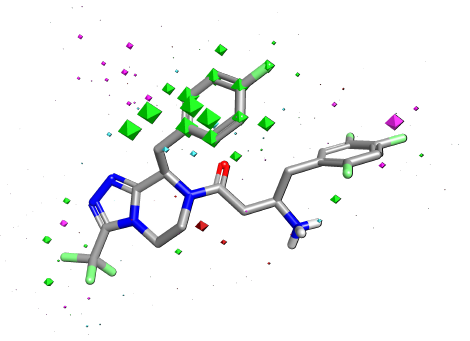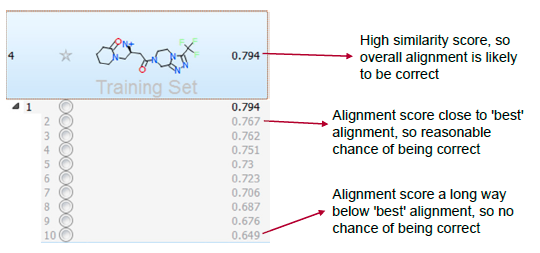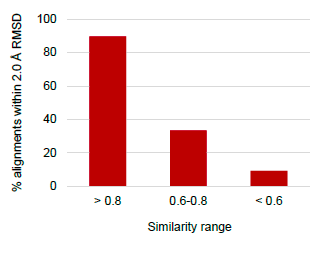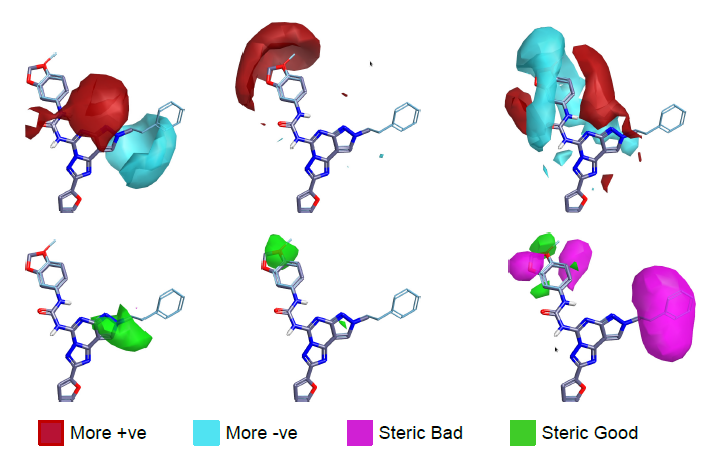Future-proofing Cybersecurity in Drug Discovery
The pharmaceutical and biotech sectors suffer more data security breaches than any other industry, with 53% resulting from malicious activity. To protect against potential ...
News
In deciding if a compound is worth making medicinal chemists need to consider a number of factors including:
Summarizing the SAR content of large compound series in a single informative picture is challenging. Traditional 3D-QSAR techniques have been used for this purpose, but are known to perform poorly where the structure-activity landscape is not smooth. 3D Activity cliff analysis has the potential to explore such rugged SAR landscapes: pairs of compounds with a high similarity and a large difference in activity carry important information relating to the factors required for activity. However, looking at pairs of compounds in isolation makes it hard to pinpoint the changes which consistently lead to increase potency across a series.
Similarly, summarizing the regions and interactions that have been explored in a single picture is not trivial, especially if the electrostatic character of compounds is to be considered (e.g., replacement of electron rich with electron poor rings).
Here we present Activity Atlas, a new technique to analyse a series of compounds and derive a global view of the structure-activity relationship data.

The Regions explored summary gives a comprehensive 3D picture of the regions explored in electrostatic and shape space. A novelty score is assigned to each compound, enabling to predict whether newly designed candidates are likely to contribute additional SAR knowledge, and are thus worth making.
Average of actives summarizes electrostatic and shape properties which consistently lead to potent ligands across the series.
The Activity cliff summary gives a global view at the activity cliff landscape highlighting the regions where either more positive/negative electrostatic potential, or larger steric/hydrophobic potentials increase activity.
A traditional 3D-QSAR model2 was built on the same data set (q2 = 0.7). While 3D-QSAR seems better at extracting information where SAR is continuous, Activity Atlas gives more definition in regions where SAR requirements are critical.

Activity Atlas takes into account multiple alignments, weighted by their probability to be correct:


Analyzing multiple alignments per molecule enables the technique to account for uncertainties in the orientation of flexible side chains not represented in the reference(s).

Application to a set of adenosine receptor antagonists with activities against A1, A2a and A3 receptors3 demonstrates the utility of the technique in locating critical regions for selectivity. Examination of the steric and electrostatic maps for the three subtypes clearly shows which regions should be targeted in order to enhance subtype selectivity.
In the example above, the right hand side of the molecules can be used to discriminate between A3 and the other two subtypes, while A1 and A2a can be separated by increasing steric bulk and positive charge around the top of the molecules.
The Activity Atlas technique is a powerful way of summarizing SAR data in 3D. By combining information across multiple pairs, it enables a global view of the critical points in the activity landscape. The Average of actives summary captures in one picture the 3D requirements for potency, while the Regions explored summary enables prioritizing compounds which add crucial SAR information over trivial analogues.
1. J. Chem. Inf. Model. 2006, 46, 665-676
2. http://www.cresset-group.com/forge
3. J. Chem. Inf. Model. 2011, 51, 258-266